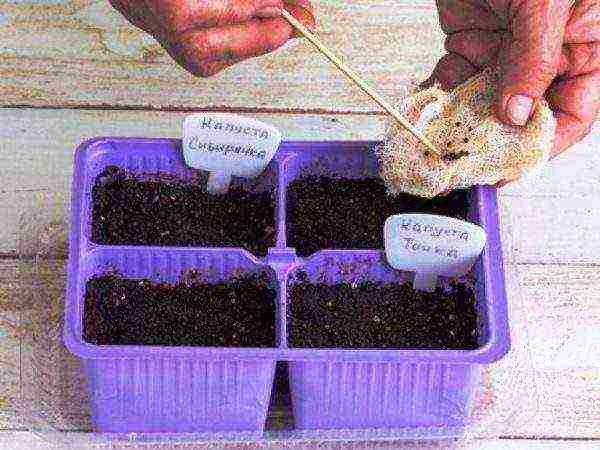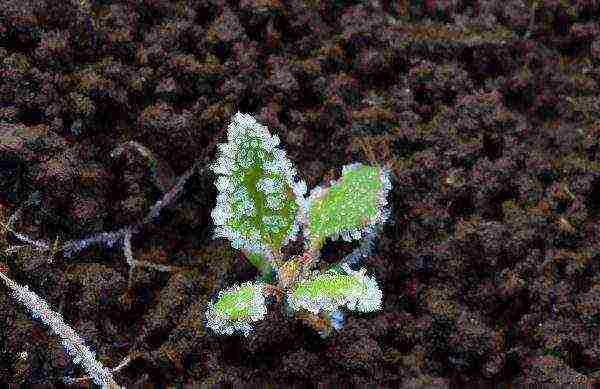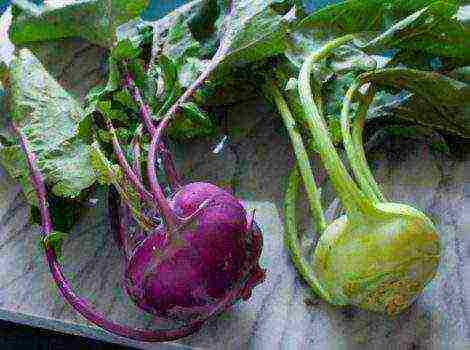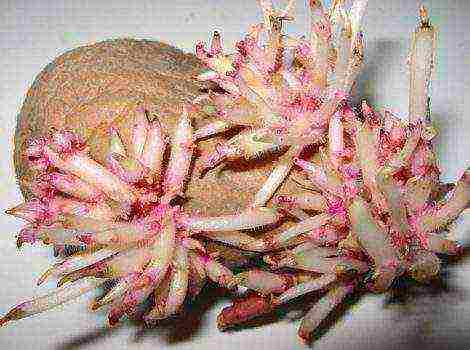Content
When to plant cabbage in open ground and is it afraid of frost
It is difficult to imagine a garden plot without a lady-cabbage, probably as difficult as our dinner table without her presence. If you know the correct timing of planting seedlings and planting in the ground, then it can be grown even in the Urals and Siberia. But when to plant cabbage seedlings in these areas, whether it is afraid of frost, we will talk in this review.
Planting dates for cabbage in Siberia and the Urals
In the harsh climate of Siberia, cabbage is grown in seedlings so that it has time to ripen in a short summer before the onset of Siberian cold and frost.
According to the ripening period, it is subdivided into early, middle and late. Naturally, the timing of sowing seeds for seedlings and planting grown and mature seedlings in the ground are different. Sowing seeds of early cabbage for seedlings is necessary in the spring at the beginning of April, middle and late in the second half of the month.

Transplanting seedlings into open ground is done at the age of 40-45 days from the moment of seed germination. Early varieties are planted approximately in mid-May, medium and late ones at the end of May. The landing is carried out when the threat of possible spring temperature drops has passed.
As the popular omen says, it is possible to plant cabbage in open ground, after the flowering bird cherry, there should be no return frosts.
Are the seedlings afraid of frost, what temperature they can withstand
This is a fairly cold-hardy culture, and it is able to withstand a drop in temperature and small short-term frosts. What is the minimum temperature the seedlings can withstand? Hardened seedlings tolerate short-term subzero temperatures up to -3 ÷ -4 ° degrees.

To save seedlings from low temperatures, you can use the sprinkling method, smoke, but this is work for the whole night and it is not always effective. To preserve the seedlings, you can cover them with hoods made of newspapers, wooden boxes, but much easier, it is more convenient and reliable to cover the plantings with a covering material with a density of 60, under which plants are able to withstand outdoor temperatures down to -7 ° C frost.

Spring planting in open ground
Planting cabbage seedlings in open ground in Siberia is practically no different from planting it in other regions, except for shifted dates and for harsh conditions, the plants must be well hardened.
The first to be planted in open ground are seedlings of early varieties, the next in line are colored, Savoy, medium and late white cabbage.
Seedlings with a fibrous root system and 3-5 well-developed leaves are considered ready for transplantation.
- Cabbage sapling
- Planting cabbage seedlings in open ground
Soil preparation: what fertilizers to apply
The place for planting is chosen open and well-lit, with loose and moisture-permeable soil. It is advisable to prepare a plot for growing vegetables in the fall. It is cleared of weeds, compost or humus and mineral fertilizers are added for digging. Organic matter is added at the rate of 3-4 kg per 1 m2, mineral fertilizers - 1 tablespoon of nitrophosphate or superphosphate per 1 m2... If the use of mineral fertilizers is not acceptable for you, it is enough to add one glass of wood ash per 1 m2.
It is good if siderates were planted on the site before digging - rye, oats, lupine, phacelia, peas. These plants improve the structure of the soil and cleanse it of such a dangerous cabbage disease as keela.
The best for growing this crop are soils with a slightly acidic or neutral reaction, therefore, acidic soils must be calcified in the fall - add slaked lime, dolomite flour or wood ash for digging. Another reason for the need to deoxidize the soil is the fight against the keel of cabbage, which rages precisely on acidic soils.
You can grow cabbage after cereals and legumes, tomatoes, onions, potatoes, peppers, cucumbers and beets.
Planting scheme and growing methods
Each type of culture has its own landing schemes:
- early white and red-headed - 30 * 50 cm;
- middle and late - 50 * 70 cm;
- Savoyard - 70 * 30 cm;
- color - 30-60 cm;
- broccoli for good shoot development - 40 * 60 cm;
- kohlrabi - 30 * 40 cm.
Cabbage loves light and good airing, therefore you can also adhere to a simpler arrangement of plants in a row and between rows 50*50 cm.
If double row fit is used, then, to avoid thickening, it is better to plant the second row in a checkerboard pattern.
- Scheme of planting cabbage in paired rows
- Scheme of planting cabbage in a checkerboard pattern
- Growing cabbage outdoors in paired rows
When planting in single rows cabbage is well ventilated and it is free for her without close neighbors.
- Single row planting scheme for cabbage
- Growing cabbage in one row
Cabbage plantations can be compacted with other crops for better use of the free area. This plant is very good for neighbors with a superficial root system, such as parsley, legumes (they also enrich the soil with nitrogen), onions, spinach, salads, dill, carrots. Cabbage takes food from the deep layers of the earth, and the neighbors from the upper ones and in such a community, no one bothers anyone.
- Growing cabbage with other vegetables
- Diagram of compacted planting of cabbage with other crops
It is advisable to plant seedlings in cloudy weather or in the evening. Strong and healthy plants are planted, if the seedlings have even the slightest signs of disease, they are discarded. They also do the same with weak plants, which are either not planted, or are planted last in the remaining area.
Neighbors can also be selected according to the ripening period. So next to the garden with early cabbage, you can plant tomatoes and beets. After harvesting ripe cabbage in June, the remaining plants will continue to develop normally.
What to put in the hole in spring and how much
If fertilizers were not applied to the area intended for growing cabbage in the fall, this can be done directly at planting. What to add to the hole when planting seedlings and how much?
In wells with a diameter 30-40 cm and depth 15-20 cm should be put1 Art. a spoonful of wood ash, 1 a teaspoon of urea and superphosphate, and, of course, put humus, enriching and improving the structure of the soil. If heavy perlite is poured on the soil. All the components of the planting hole are mixed well with the ground, poured with a pink solution of potassium permanganate, or with a solution of soda ash (a glass of soda on a bucket) and the seedlings are planted.The seedlings deepen in cotyledonous leaves and slightly compact the soil.
You do not need to spend special efforts on growing cabbage if adhere to planting dates and follow agricultural techniques. And you will be provided with this tasty and healthy vegetable all year round.


